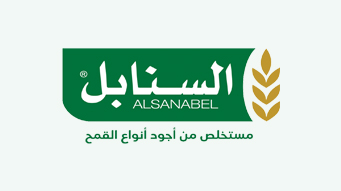
Steps to design an effective wastewater treatment plant
Water and wastewater treatment plants have become an integral part of our modern world, playing a vital role in protecting the environment and public health. To treat this massive amount of waste, it is essential to design effective wastewater treatment plant. A well-designed water treatment plant ensures complete removal of contaminants, maintains water quality, and minimizes environmental impacts.
Key Considerations for Designing an Effective Wastewater Treatment Plant
Designing a water treatment plant is a complex process that requires careful planning, strict adherence to regulations, and careful consideration of various factors to ensure the plant’s efficiency and effectiveness. Factors affecting water treatment plant design include:
Plant Location:
The first and most important step in designing a water treatment plant is assessing its location and selecting appropriate processes. The optimal selection depends on:
- Proximity to nearby water sources
- Distance from residential areas
- Soil conditions
- Flooding risk
- Wind conditions
- Availability of a system for effluent and sludge disposal
- Site expansion potential
- Chemicals and equipment used in wastewater treatment
Layout design:
The next step is to develop a water treatment plant layout and optimize water flow through the various treatment stages while minimizing energy consumption and operating costs. Plant designers must consider adequate space for equipment and chemicals and accessibility for maintenance when designing a water treatment plant. They should also:
- Locate the plant away from neighboring residences and other stakeholders.
- Maintain a buffer zone of approximately 500 feet between residential areas and the nearest plant facility.
- Locate facilities that may emit odors, such as ventilation works, as far away as possible from residential areas.
- Take measures to contain odors, such as covering or housing odor-causing facilities, and ensure adequate ventilation and air purification systems are in place.
Equipment type:
Plant designers must select appropriate equipment and technologies based on treatment processes, regulatory standards, and water quality objectives. Factors to consider include treatment capacity, efficiency, reliability, maintenance requirements, and compatibility with other system components.
Noise and Aesthetics:
Designers must also consider noise levels and aesthetics when optimizing the design of a water treatment plant. They should select equipment with low decibel ratings to minimize noise pollution during operation. They should also make wise construction choices to facilitate noise containment and meet the aesthetic requirements of surrounding communities.
Effluent Discharge Standards for Safety and Amenity:
A key step for the design team is establishing guidelines for the discharge of effluent from the facility. By establishing clear effluent quality standards, the team can then effectively design and select equipment to meet these standards, ensuring compliance with legal requirements. This proactive approach not only protects environmental health but also reduces the risk of regulatory violations, reassuring stakeholders and the community.
Read also: Five Tips for Choosing the Right Valve in a Greywater Treatment Plant
How Can Technology Help You Design an Effective Wastewater Treatment Plant?
Water treatment plant design is a collaborative effort. Designers need to work together at multiple levels and stages to ensure maximum design efficiency. Here’s how modern technologies, such as computer-aided design (CAD) and building information modeling (BIM), help design highly efficient, cost-effective, and outstanding water treatment plants that meet the aesthetic requirements of the water treatment plant:
Detailed Design Creation: Software such as AutoCAD, Plant 3D, PDMS, and Revit enable designers to create detailed and accurate 2D drawings of water treatment plant components, equipment, piping systems, structures, and layouts. This includes pumps, valves, tanks, pipelines, reactors, purification units, and more. The ability to create detailed drawings helps designers identify and address issues during the design phase, ensuring efficient and error-free design, construction, and operation of water treatment plants.
Detailed Design Creation
- Accurate Visualization and Simulation: Computer-aided design (CAD) and building information modeling (BIM) enable designers to visualize the water treatment plant design in 3D, providing a realistic representation of how the various components interrelate and interact within the plant. This visualization helps understand spatial relationships.
- Improved design efficiency: CAD software provides tools to optimize design parameters, such as dimensions, materials, connections, and flow paths. Designers can experiment with different design configurations, evaluate their performance through simulation, and make necessary adjustments to arrive at optimal design solutions. This iterative process helps improve design efficiency and meet project requirements.
- Seamless collaboration: CAD and BIM software facilitate collaborative design efforts, allowing multiple team members to work on the same design simultaneously. Designers, engineers, architects, and other stakeholders can collaborate, exchange feedback, and conduct real-time reviews. This improves coordination and communication throughout the water treatment plant design process.
- Detailed documentation and drawing creation: CAD software automates the creation of drawings, diagrams, and detailed documentation for water treatment plant designs. This simplifies the documentation process and ensures consistency in design documentation.
- Seamless integration with other software: Computer-aided design (CAD) and building information modeling (BIM) software can integrate with other software and technologies used in water treatment plant design, such as geographic information systems (GIS) and simulation software. This integration enables seamless data exchange and interoperability. For interoperability and collaboration between different design disciplines and project phases.
Best Practices for effective wastewater treatment plant Design
Choosing the Right Software
When choosing water treatment plant design software, designers must ensure its compatibility with existing data and systems. Its functions and features must meet your design requirements. Furthermore, it must be easy to use, cost-effective, and quick to update.
Important Article on Strategies for Reducing the Operating Cost of Industrial Wastewater Treatment Plants
Following Design Standards and Guidelines
Designers must adhere to relevant design standards and guidelines. This ensures that your design meets the technical, regulatory, and environmental standards for water treatment plants. You will be able to avoid errors, design inconsistencies, and conflicts while continually improving its quality and reliability.
Modeling in Building Information Modeling (BIM)
Don’t leave your design in CAD. Create a 3D model of your water treatment plant in Building Information Modeling (BIM). This will help you visualize your design in a realistic and detailed way. You will be able to identify and resolve any potential problems or overlaps, improve your design, and communicate and collaborate efficiently with other stakeholders.
Integrating Automation and Simulation
Use automation and simulation tools to save time, effort, and resources. Using automation tools, you can modify drawings and models based on pre-defined rules and criteria. You can test and evaluate the performance of your design under different conditions and assess the results and impacts. This will help you improve the feasibility and effectiveness of your plant layout design.
Collaborate with Experts
Since water treatment plant design is a dynamic and iterative process, it involves numerous changes and revisions. To avoid inconsistency, duplication, and confusion, it is advisable to seek the help of computer-aided design (CAD) experts. With their expertise and specialized skills in CAD software, CAD designers and draftsmen ensure efficient water plant design processing. They ensure accurate modeling, documentation, and smooth coordination, ultimately resulting in optimal, error-free water treatment plant designs.


























